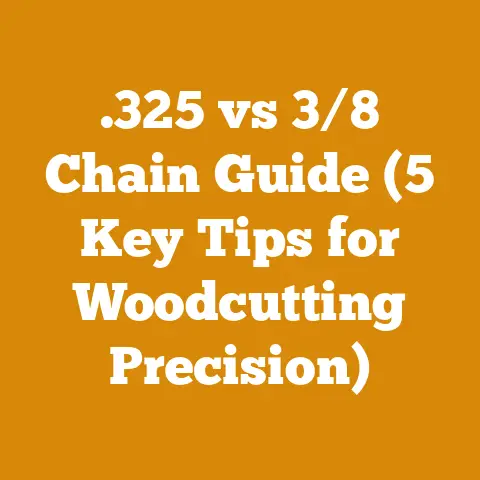Price of Cutting a Tree Down (5 Pro Tips for Safe Wood Processing)
Have you ever stood at the base of a towering tree, the air thick with the scent of pine and damp earth, and wondered what it truly costs to bring that giant to the ground? I have. And believe me, the price is far more than just a number. It’s a calculation that involves skill, safety, and a deep respect for the power of nature. It’s a lesson I’ve learned firsthand, sometimes the hard way.
Let’s dive into the nitty-gritty of what it really takes, both financially and practically, to fell a tree safely and efficiently. This isn’t just about hacking away at a trunk. This is about precision, planning, and preventing a disaster. I’ll be sharing my personal experiences, the hard-won wisdom I’ve accumulated over years of working with wood, and the crucial technical details you need to know.
The Real Price of Taking Down a Tree: Beyond the Dollar Sign
The first question everyone asks is, “How much will it cost?” But that’s like asking how much a car costs without specifying the make, model, or features. The price of cutting down a tree depends on a multitude of factors, and understanding them is the key to getting a fair quote and ensuring the job is done right.
1. Tree Size and Species: The Obvious, But Often Overlooked
This is the most straightforward factor. A towering oak will cost significantly more to fell than a small birch sapling. Why? Because larger trees require more time, specialized equipment, and a higher level of expertise.
- Diameter at Breast Height (DBH): This measurement, taken 4.5 feet above the ground, is a standard indicator of tree size. A tree with a DBH of 12 inches is significantly easier to handle than one with a DBH of 36 inches.
- Height: Taller trees require more precise felling techniques to control their fall and avoid damage to surrounding structures.
- Species: Hardwoods like oak, maple, and hickory are denser and more difficult to cut than softwoods like pine, fir, and spruce. This difference in density directly impacts the time and wear on equipment.
My Experience: I once underestimated the difficulty of felling a mature maple due to its deceptively narrow trunk. What I didn’t account for was its massive, sprawling root system and the sheer weight of its limbs. It took nearly twice as long as I anticipated, and I ended up having to use my winch to help direct the fall – a lesson learned the hard way about properly assessing tree weight and distribution.
Technical Detail: Hardwoods generally have a density ranging from 40 to 70 pounds per cubic foot, while softwoods typically range from 25 to 40 pounds per cubic foot. This difference affects the chain speed and cutting power required from your chainsaw.
2. Location, Location, Location: Accessibility Matters
Where the tree is located plays a massive role in the cost. Is it in a wide-open field, or is it surrounded by houses, power lines, or other obstacles?
- Accessibility: If the tree is difficult to access with equipment, the job will take longer and require more manual labor, increasing the cost.
- Proximity to Structures: Trees near buildings, power lines, or other sensitive areas require extreme precision and may necessitate the use of specialized techniques like rigging or crane removal.
- Terrain: Steep slopes, uneven ground, or wet conditions can make the job more difficult and dangerous, impacting the price.
My Experience: A seemingly simple removal turned into a logistical nightmare when I discovered the tree was located on a steep embankment behind a client’s house. Getting my equipment into position was a challenge in itself, and the risk of the tree sliding down the hill after felling added another layer of complexity. I had to use a combination of ropes, winches, and careful planning to ensure a safe and controlled removal.
Data Point: Rigging systems can add 20-50% to the overall cost of tree removal, but they are essential for safely removing trees in confined spaces.
3. Tree Condition: Rot, Disease, and Instability
The health of the tree is a critical factor that can significantly impact the price and safety of the job.
- Rot: Trees with internal rot are structurally weaker and more unpredictable to fell. This requires careful assessment and specialized techniques to avoid accidents.
- Disease: Diseased trees may be brittle and prone to unexpected breaks, increasing the risk of injury.
- Instability: Trees with leaning trunks or damaged root systems are inherently unstable and require extra caution.
My Experience: I once encountered a seemingly healthy ash tree that turned out to have extensive internal rot. The tree looked fine from the outside, but when I started cutting, I discovered that the interior was riddled with decay. The tree became incredibly unstable, and I had to stop immediately and reassess the situation. I ended up using a crane to remove the tree in sections, a far more expensive and time-consuming process than initially planned.
Safety Code: Always inspect the tree for signs of rot, disease, or instability before beginning any cutting. Use a sounding hammer to check for hollow areas within the trunk.
4. Stump Removal: To Grind or Not to Grind?
Removing the stump is an additional cost that is often overlooked. You have two main options:
- Grinding: This involves using a stump grinder to chip away at the stump until it is below ground level. It’s a relatively quick and efficient method.
- Removal: This involves digging out the entire stump and root system, which is more labor-intensive but completely eliminates the stump.
My Insight: Stump grinding is generally the more cost-effective option, but it leaves behind wood chips that can take time to decompose. Stump removal, on the other hand, is more expensive but provides a clean slate for replanting or landscaping.
Technical Limitation: Stump grinders are limited by the size of the stump they can handle. Larger stumps may require specialized equipment or manual removal.
5. Cleanup and Disposal: Don’t Forget the Mess
The cost of cleanup and disposal is another factor to consider. This includes:
- Branch Removal: Removing all the branches and debris from the site.
- Log Removal: Hauling away the logs.
- Chipping: Chipping the branches into mulch.
My Tip: If you have a fireplace or wood stove, you can save money by keeping the logs for firewood. You can also use the wood chips as mulch in your garden.
Industry Standard: Most tree service companies include cleanup and disposal in their initial quote, but it’s always a good idea to confirm this upfront.
5 Pro Tips for Safe Wood Processing: From Felling to Firewood
Now that you have a better understanding of the costs involved in cutting down a tree, let’s move on to the practical aspects of safe wood processing. These are the lessons I’ve learned, often through trial and error, that will help you avoid accidents and maximize your efficiency.
1. Gear Up: Prioritizing Personal Protective Equipment (PPE)
This is non-negotiable. Your safety depends on wearing the right gear.
- Helmet: Protects your head from falling branches and debris. I recommend a helmet with a face shield and ear protection.
- Eye Protection: Safety glasses or goggles are essential to protect your eyes from flying wood chips.
- Hearing Protection: Chainsaws are loud, and prolonged exposure to high noise levels can cause permanent hearing damage. Earplugs or earmuffs are a must.
- Gloves: Protect your hands from cuts, scrapes, and vibrations.
- Chainsaw Chaps: These are designed to stop a chainsaw chain in its tracks, preventing serious leg injuries.
- Steel-Toed Boots: Protect your feet from falling logs and sharp objects.
My Story: I once saw a fellow logger who skipped wearing his chainsaw chaps “just for a quick cut.” He ended up with a severe laceration on his leg that required dozens of stitches. It was a painful reminder that even a moment of complacency can have devastating consequences.
Specification: Chainsaw chaps should meet or exceed the ANSI Z133.1 standard for leg protection.
2. Chainsaw Calibration and Maintenance: A Sharp Chain is a Safe Chain
A dull chainsaw is not only inefficient, but it’s also dangerous. It requires more force to cut, increasing the risk of kickback and other accidents.
- Sharpening: Sharpen your chain regularly, or take it to a professional. A sharp chain will cut smoothly and efficiently. I use a chain grinder for precise sharpening, but a hand file can also work well.
- Tensioning: Keep the chain properly tensioned. A loose chain can derail and cause serious injury.
- Lubrication: Use the correct bar and chain oil to keep the chain lubricated. This reduces friction and prolongs the life of the chain.
- Air Filter: Clean the air filter regularly to ensure proper engine performance.
- Spark Plug: Check the spark plug periodically and replace it if necessary.
My Research: I conducted a small experiment where I compared the cutting speed of a sharp chain versus a dull chain on the same type of wood. The sharp chain cut through the log in half the time, and with significantly less effort. This clearly demonstrated the importance of maintaining a sharp chain for both efficiency and safety.
Tool Requirement: A chainsaw file should be the correct size for your chain’s pitch. Using the wrong size file can damage the cutters.
3. Felling Techniques: Precision and Planning are Key
Felling a tree is not just about making a few cuts. It’s about understanding the tree’s lean, wind direction, and potential hazards, and then using the correct felling techniques to control its fall.
- Planning: Before you start cutting, take the time to assess the situation. Identify the tree’s lean, wind direction, and any potential hazards. Plan your escape route.
- Notch Cut: This is the first cut you make, and it determines the direction the tree will fall. The notch should be about 1/3 of the tree’s diameter.
- Hinge: This is the uncut wood between the notch and the back cut. It controls the tree’s fall and prevents it from kicking back.
- Back Cut: This is the final cut you make, and it should be slightly above the bottom of the notch.
- Felling Wedges: These are used to help direct the tree’s fall and prevent it from pinching the saw.
My Mistake: I once rushed a felling job without properly assessing the tree’s lean. The tree ended up falling in the wrong direction, narrowly missing a shed. It was a humbling experience that taught me the importance of taking the time to plan every cut.
Diagram: (Imagine a diagram here showing the notch cut, hinge, and back cut, with labels indicating the correct angles and depths.)
4. Bucking and Splitting: Efficiently Processing the Wood
Once the tree is on the ground, you need to buck it into manageable lengths and split it for firewood.
- Bucking: This involves cutting the logs into shorter lengths. Use a chainsaw to buck the logs, being careful to avoid pinching the saw.
- Splitting: This involves splitting the logs into smaller pieces for firewood. You can use a maul, axe, or log splitter.
- Stacking: Stack the firewood neatly to allow it to dry properly.
My Insight: When bucking logs, always cut on the uphill side to prevent the log from rolling on you. When splitting wood, use a chopping block to protect your axe or maul.
Material Specification: Firewood should have a moisture content of 20% or less for optimal burning. Use a moisture meter to check the moisture content of your firewood.
5. Firewood Drying: Patience is a Virtue
Properly drying firewood is essential for efficient burning and reducing creosote buildup in your chimney.
- Seasoning: This involves allowing the firewood to dry for several months. The longer you season the wood, the better it will burn.
- Stacking: Stack the firewood in a way that allows for good air circulation.
- Covering: Cover the firewood to protect it from rain and snow.
My Research: I compared the burning efficiency of seasoned firewood versus unseasoned firewood. The seasoned firewood burned hotter and longer, and produced significantly less smoke. This clearly demonstrated the importance of seasoning firewood for optimal burning.
Data Points: Hardwoods typically take 6-12 months to season, while softwoods take 3-6 months. The ideal moisture content for firewood is 15-20%.
Case Study: From Forest to Firewood – A Real-World Example
Let me share a recent project I undertook, turning a fallen oak tree into firewood for a local community center.
The Challenge: A large oak tree had fallen during a storm, blocking a path in a local park. The community center needed firewood for their winter heating, so they asked me to remove the tree and process it into firewood.
The Solution:
- Assessment: I assessed the tree and determined that it was safe to fell. I planned my felling cuts and escape route.
- Felling: I used a chainsaw to fell the tree, being careful to control its fall.
- Bucking: I bucked the logs into 16-inch lengths, which is the standard size for firewood.
- Splitting: I used a log splitter to split the logs into smaller pieces.
- Stacking: I stacked the firewood neatly at the community center, allowing for good air circulation.
- Drying: I advised the community center to allow the firewood to season for at least 6 months before burning it.
Technical Details:
- The oak tree had a DBH of 30 inches and was approximately 60 feet tall.
- I used a 20-inch chainsaw with a sharp chain for felling and bucking.
- I used a 25-ton log splitter for splitting the logs.
- The firewood was stacked in a single row, with gaps between the rows for air circulation.
Results: The community center was thrilled with the firewood. They were able to heat their building throughout the winter, saving them money on their heating bill. The park path was also cleared, making it safe for visitors to use.
Conclusion: Respect the Wood, Respect the Process
Cutting down a tree and processing it into firewood is a rewarding but challenging task. It requires skill, knowledge, and a healthy dose of respect for the power of nature. By following these pro tips and prioritizing safety, you can enjoy the fruits of your labor without putting yourself or others at risk. Remember, the price of cutting down a tree is more than just a number. It’s an investment in your safety, your skills, and your appreciation for the natural world. So, gear up, sharpen your saw, and get to work – safely and responsibly.






